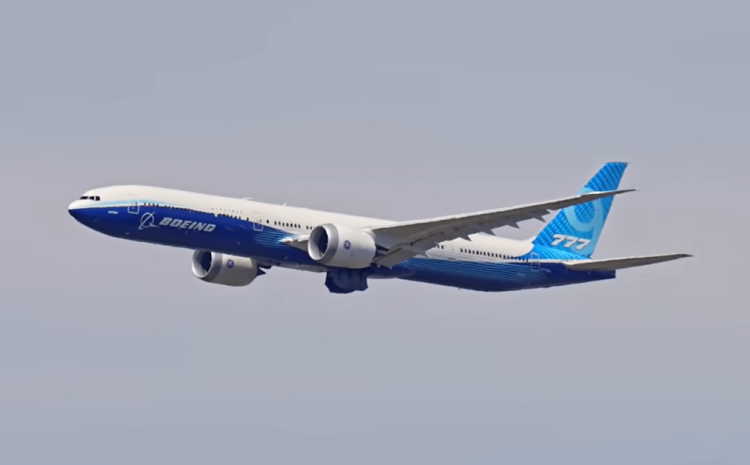Passenger Accommodation on the Boeing 777

Discover the array of passenger-carrying versions available for the Boeing 777 jetliner. Ever wondered about the passenger capacity? Well, the 777 models can accommodate between 312 to 388 passengers, featuring a versatile 3-class setup that allows for varying cabin configurations. Not only does this aircraft boast impressive capacity, but it also covers impressive distances, ranging from 6,027 miles (9,700 km) to 10,048 miles (16,170 km), making Trans-Atlantic flights a breeze.
As you delve deeper, we’ll explore each Boeing 777 airplane in this class, gaining insight into how airlines optimize the spacious cabin for a superior passenger experience.
Boeing 777 Overview
Step into the world of Boeing’s impressive 777 family, introduced in 1994 and still a prominent force in aviation today. This remarkable lineup consists of 5 passenger-carrying airplanes and a dedicated freighter model for cargo transport.
The Boeing 777 was conceived with the vision of offering a comfortable long-haul experience. It fills the niche of a mid-sized aircraft capable of non-stop flights, eliminating the need for layovers at hub airports. In Boeing’s diverse product lineup, the 777 complements other models like the shorter-range Boeing 737, which caters to a smaller passenger capacity.
The Passenger Capacity of Boeing 777
- Boeing 777-200: The 777-200 model boasts a passenger capacity of 312, the smallest among the 777-class planes, with a maximum flight range of 6,027 miles (9,700 km);
- Boeing 777-300: Leading the standard 777-class planes, the Boeing 777-300 accommodates up to 388 passengers in a normal cabin layout and offers an extended flight range of 6,937 miles (11,165 km);
- Boeing 777-200ER: The long-range Boeing 777-200ER (“ER” for Extended Range) can carry 314 passengers and is designed for non-stop long-distance flights, covering up to 8,128 miles (13,080 km);
- Boeing 777-300ER: Introduced due to the growing demand for extended-range aircraft, the 777-300ER accommodates 386 passengers and boasts an impressive flight range of 8,481 miles (13,649 km);
- Boeing 777-200LR: At the pinnacle of the 777 family, the 777-200LR Worldliner offers the longest range of 9,844 miles (15,843 km) and holds the LR designation for “longer range.”
- Boeing 777X: As the newest addition to the 777 family, the 777X is set to enter commercial service in 2025, featuring the 777-8 and 777-9 variants. Its new engines enhance fuel efficiency and reduce CO2 emissions;
- Boeing 777-8: Designed for ultra-long-haul flights, the 777-8 can cover up to 10,048 miles (16,170 km) with a typical 2-class passenger capacity of 384;
- Boeing 777-9: Offering the highest passenger capacity in the 777 family, the 777-9 accommodates up to 426 passengers and has a flight range of 8,389 miles (13,500 km).
| Model | Passenger Capacity | Flight Range (miles) |
|---|---|---|
| Boeing 777-200 | 312 | 6,027 |
| Boeing 777-300 | 388 | 6,937 |
| Boeing 777-200ER | 314 | 8,128 |
| Boeing 777-300ER | 386 | 8,481 |
| Boeing 777-200LR | 312 | 9,844 |
| Boeing 777X (777-8) | 384 | 10,048 |
| Boeing 777X (777-9) | 426 | 8,389 |
Standard Seating Configuration of Boeing 777-Class Airplanes
The seating plan of a Boeing 777-class airplane can vary significantly depending on the specific airline’s preferences and requirements. The aircraft’s interior is designed with modular construction, allowing airlines to freely place various features, such as galleys, toilets, and more, within designated zones while considering the aircraft’s internal wiring and plumbing.
Even the overhead storage compartments are easily disassembled and repositioned without disturbing ceiling panels or the air conditioning system. This exceptional flexibility enables airlines to completely change the internal layout of a Boeing 777 within a timeframe of approximately 3 days, adapting the configuration to suit their operational needs and provide the best possible passenger experience.

Maximizing Seating Potential in the Boeing 777
The remarkable flexibility of the Boeing 777 allows airlines to tailor the aircraft to their specific needs, often surpassing the official Boeing passenger capacity figures by a significant margin.
For short-haul flights in certain regions of Eastern Asia, lie-flat seats may not be necessary. This presents an opportunity to utilize the Boeing 777-300 for these routes. All Nippon Airways (ANA) once operated several Boeing 777-300 planes with an impressive passenger capacity of 514, maximizing the potential of this aircraft for such operations.
Conclusion
Your journey aboard a Boeing 777 is shaped by three key elements: the specific type of 777, the airline you choose, and the class of ticket you purchase. Take, for instance, an Emirates 777-300ER, where passengers are presented with an array of options. First-class passengers enjoy the indulgence of luxurious suites with personalized entertainment, minibars, and fine dining. Business class offers comfortable lie-flat booths, while economy class passengers typically experience a 3-4-3 seat layout towards the rear of the aircraft.
Anticipating the future, the forthcoming 777X class promises exciting advancements that may revolutionize the overall passenger experience. The next few years hold the potential for further developments, elevating your Boeing 777 encounter to new heights.